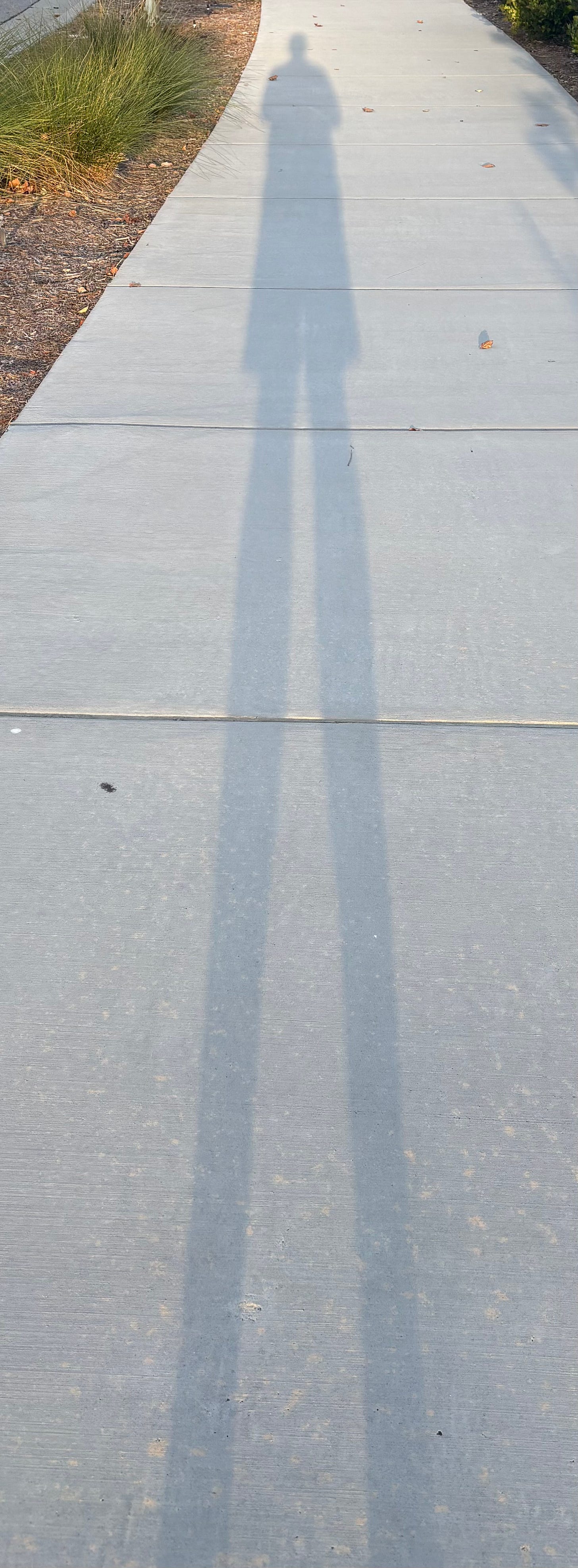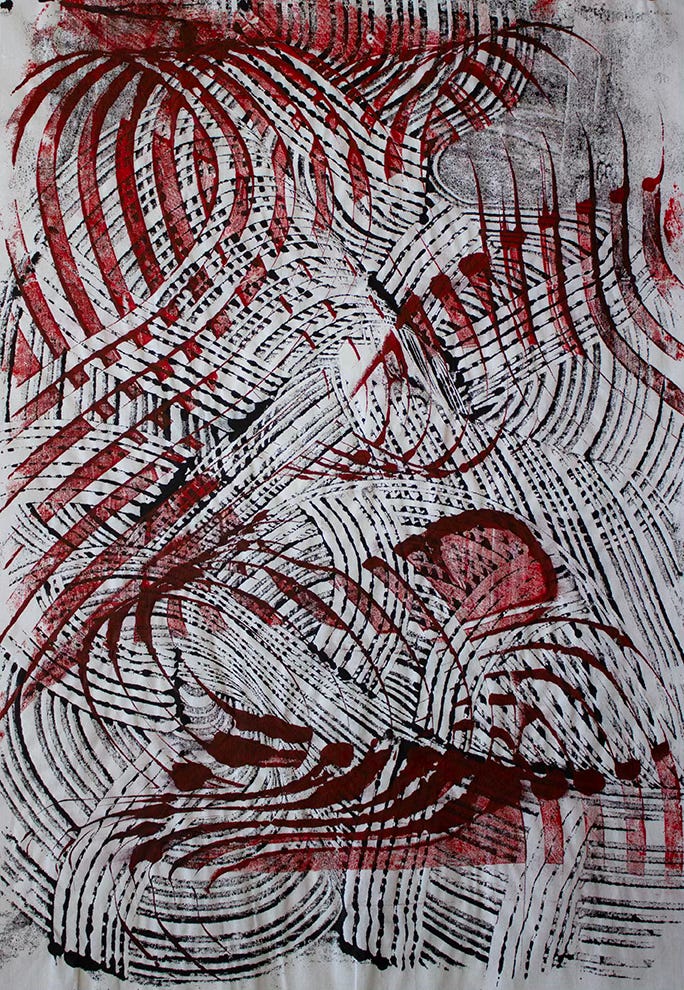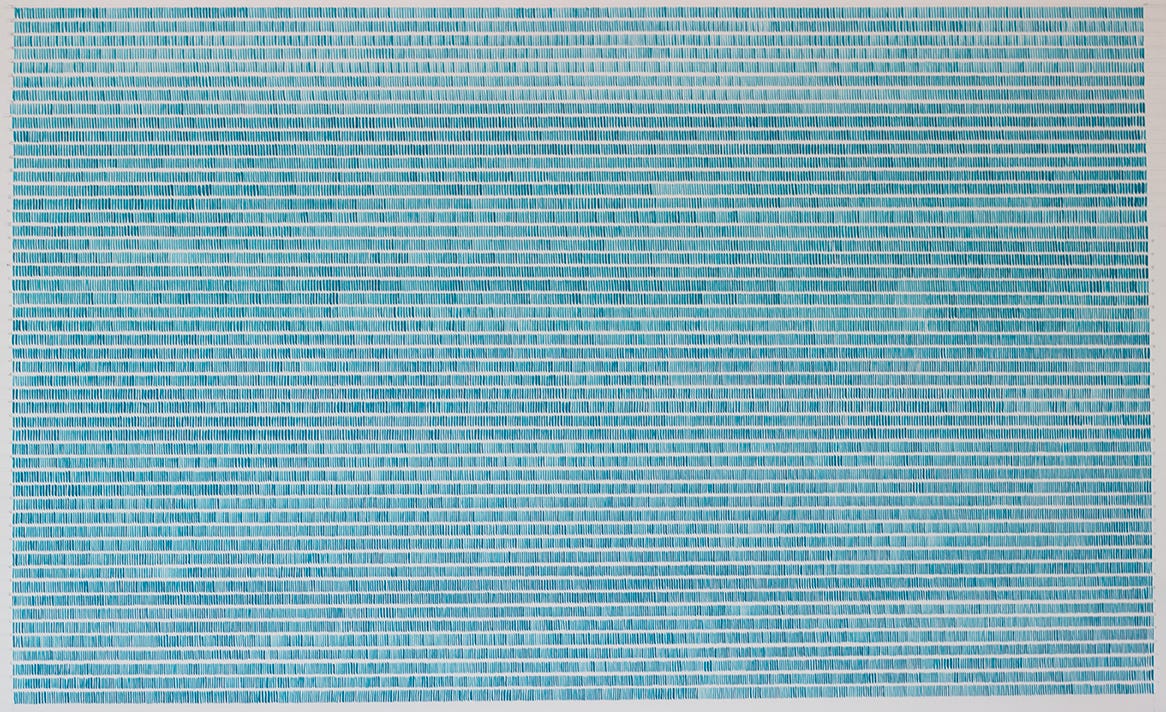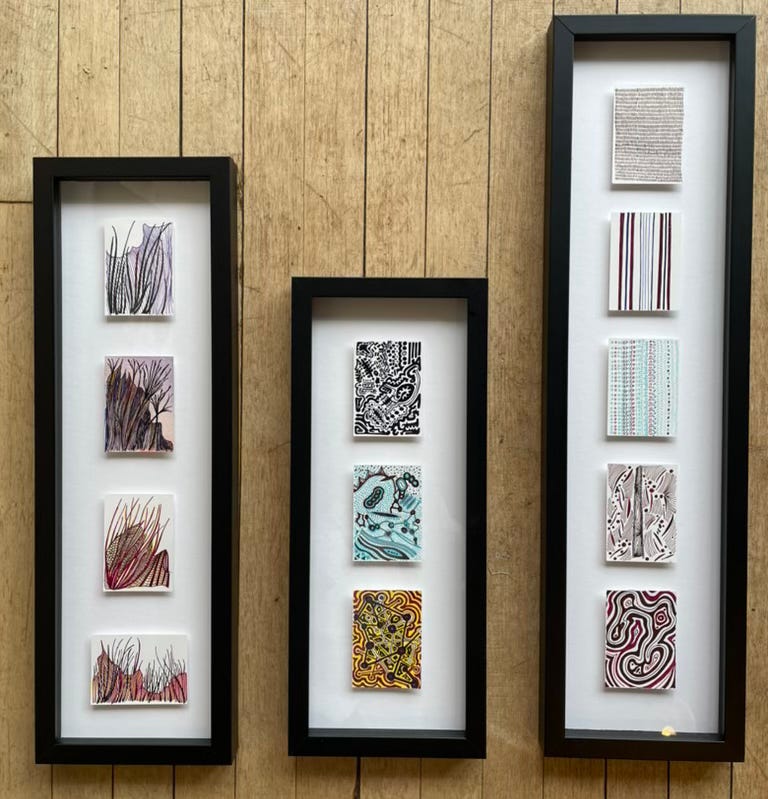Art Bands and the Art of Being Different
Devo, the B-52’s, and what they still teach me about making art
Note: Check out the YouTube video of my artist talk for more about my “rule-breaking” in my solo exhibition at Gordy Fine Art & Framing (May 2024) — all the pieces in this post were featured in that show.
Over breakfast this morning, I caught Mark Mothersbaugh of Devo being interviewed about the 2024 Netflix documentary and their current tour. The hosts asked the usual questions about red hats and “Whip It,” but what stopped me was something deeper, he said: that Devo was an art band. Suddenly, everything clicked.
I realized I’ve spent a lifetime drawn to art bands — Devo, the B-52’s, Talking Heads — without ever understanding why.
Now that I’m living as an artist, I see it clearly. These weren’t just bands. They were conceptual art projects set to rhythm.
Devo: The Art of De-Evolution
I was on my way to work one afternoon, driving to my family’s machine shop after school, when something strange came on the radio. It was a cover of the Rolling Stones’ “(I Can’t Get No) Satisfaction,” but it sounded completely wrong — flat, robotic, sarcastic.
My first thought was, “What is this crap?” It felt like the worst cover I’d ever heard. These guys didn’t know what the hell they were doing. (Yet, it’s currently playing in my earbuds!)
Then the DJ said who it was: an alternative band called Devo. I didn’t realize the point was not to mimic the original but to completely flip it on its head. Their version wasn’t reverent — it was conceptual.
A few days later, at lunch in high school, my friend (I’ll call him Mike) asked if I’d heard of this weird new band. “They’re called Devo,” he said. “They’re doing this funky, totally bizarre stuff. You should check them out.”
He told me about their idea of “de-evolution” — that humanity was going backward, not forward.
That’s when I tuned in to a different station — KROQ, the local alternative station — and from that point on, I was hooked. Before that, I’d been a regular rock listener (back when rock was just rock, not “classic rock”). But KROQ opened a different world.
At first, I didn’t know whether I loved Devo or hated them. Their sound was abrasive, mechanical, and totally unlike anything else. But the strangeness was seductive. I borrowed their first album, then bought my own copy, then another. They made me feel like I was in on a secret the rest of the world didn’t quite understand.
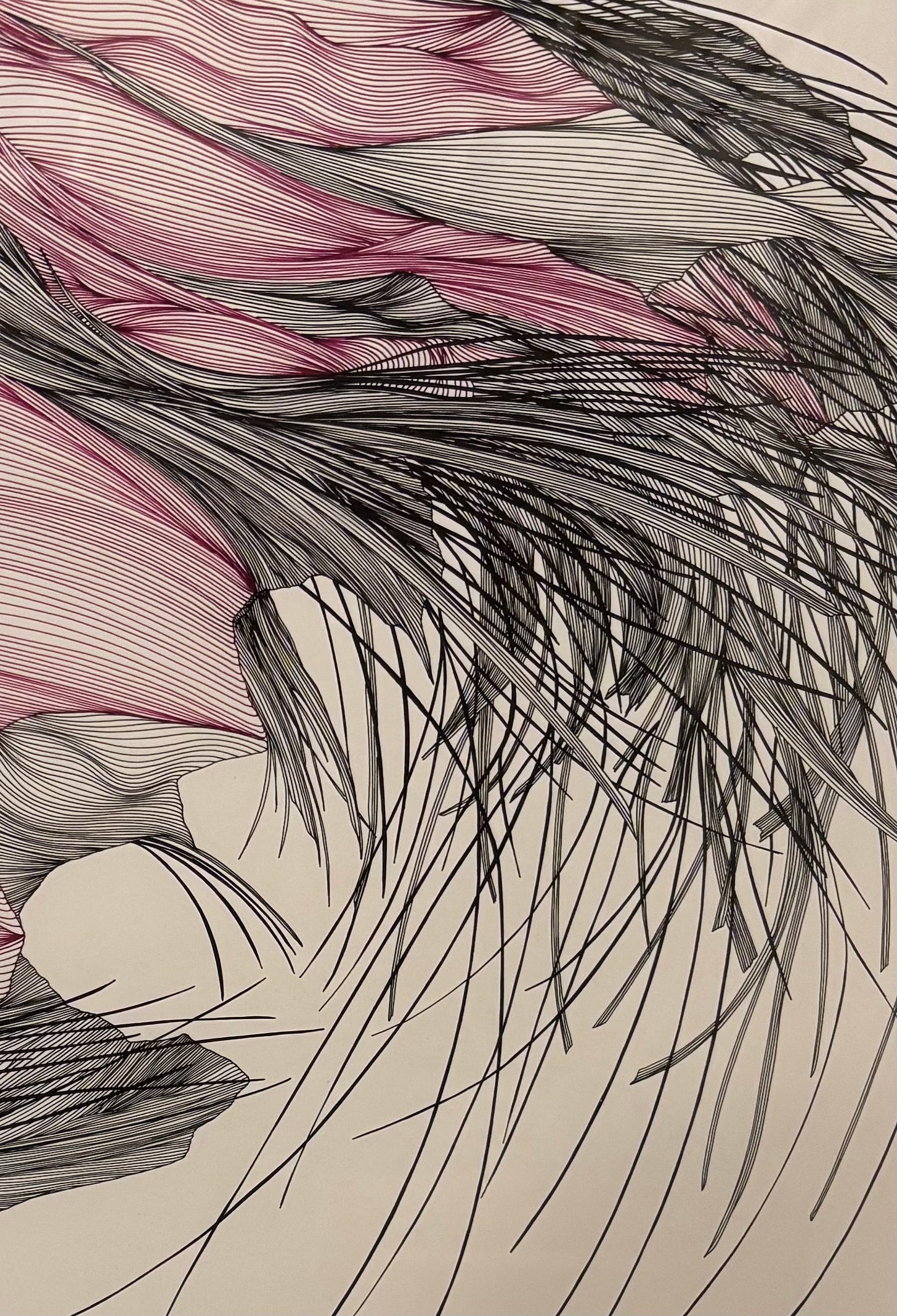
When “Whip It” hit, I was actually bummed.
It’s the only Devo song I’ve still not added to my Spotify “liked songs” list. Suddenly, everyone at school was singing it. Devo was everywhere. I didn’t think they sold out — I just didn’t like that something that had set me apart was now mainstream.
Still, the Freedom of Choice album featured great tracks, including “Gates of Steel,” “Girl U Want,” and “Freedom of Choice.” “Whip It” just got all the attention, and that ridiculous video overshadowed how purely artistic their early ones were. Those early short films were strange and brilliant — they boggled my mind.
That was the paradox of Devo: they looked silly on the surface, but the work was deeply conceptual. They were performance artists using pop to critique pop, art-school pranksters with a serious point about conformity and control.
I eventually went to see them live — my first and only Devo concert — with my high-school girlfriend. We saw them at the Forum. The tickets cost $25 each, which seemed outrageous to me at the time, but were worth it. The seats weren’t amazing — halfway up the first level on the right side of the stage — but the show was electric. They wore their yellow jumpsuits at first and did a few costume changes during the show.
Even now, decades later, I still have many Devo songs on my Spotify “liked songs” list. Preparing for the upcoming concert with Leela (not her real name), I’ve been revisiting all those old tracks. Every song hits differently now — part nostalgia, part recognition. The satire that I once missed is clear as day: the humor, the critique, the structure beneath the chaos.
Devo taught me something essential long before I called myself an artist — that even absurdity can be discipline, that order and rebellion can coexist. I still straddle that fence, the line between conformist and non-conformist, trying to organize the world while also breaking its rules.
Devo and My Art Practice
Devo taught me something essential long before I called myself an artist — that even absurdity can be discipline, that order and rebellion can coexist. I still straddle that fence, the line between conformist and non-conformist, trying to organize the world while also breaking its rules.
That paradox also appears in my own art. I build systems just to subvert them — circle grids that warp, ink lines that refuse to behave. What begins as order often ends in chaos. It’s my way of testing how much structure the human heart can stand before it needs to break free.
I start with precision — grids, repetition, discipline — and then I let instinct take over. The lines veer off course, the patterns fracture, the rules dissolve. It’s deliberate and accidental at once: my version of Devo’s satire or the B-52s’ camp, art that takes itself seriously enough to laugh at its own precision.
In that space between control and release, I find freedom. The drawings become their own kind of music — rhythmic, strange, and alive — proof that sometimes the best rules are the ones you learn to break beautifully.
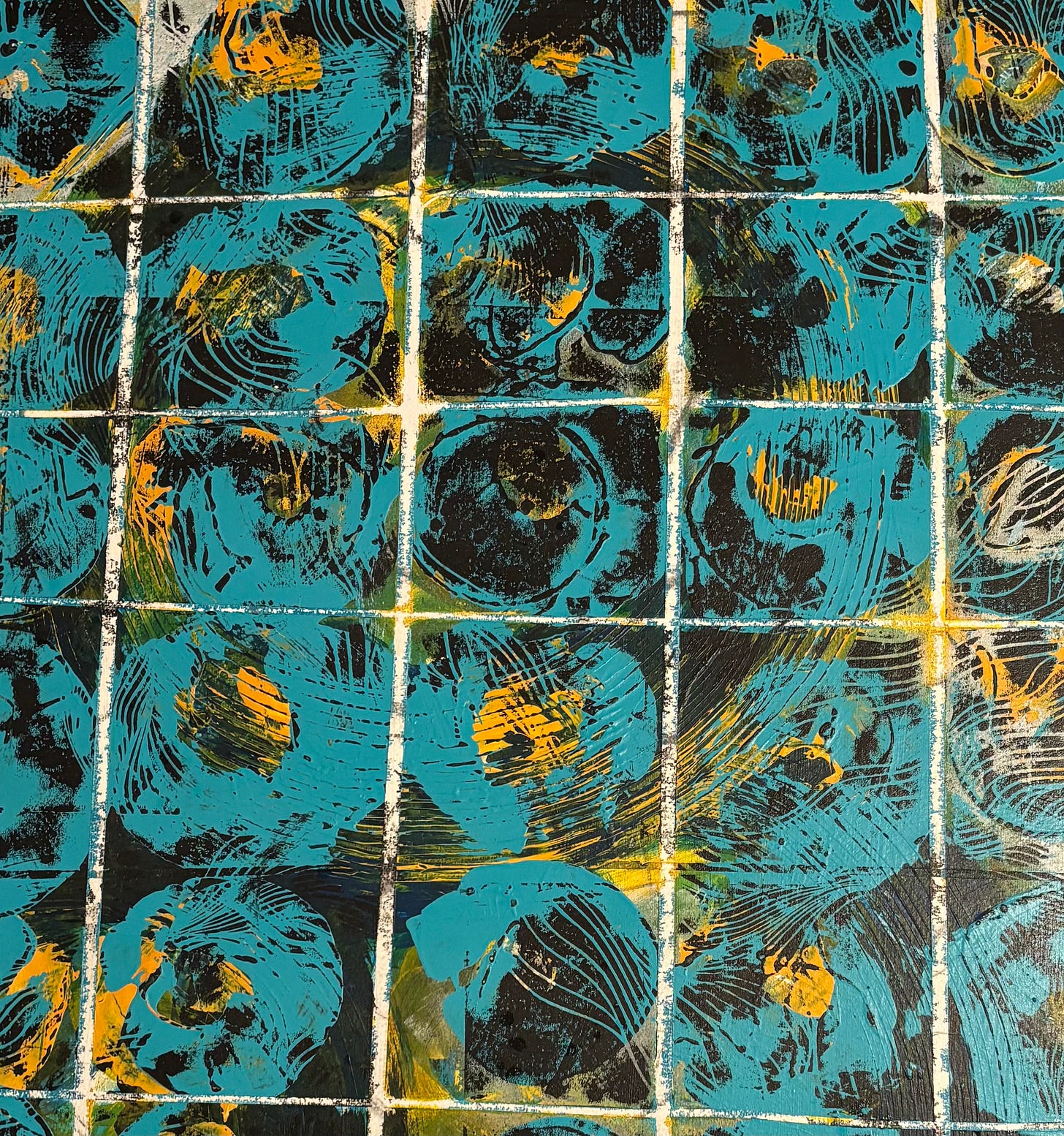
The B-52’s: Camp as Liberation
I don’t remember exactly how I was introduced to the B-52’s, but since I was already listening to KROQ, it was probably inevitable.
I think it was Mike who first mentioned them. He was already deep into the alternative scene — quirky, slow-speaking, and always ahead of me when it came to finding strange new music. He began discussing the absurdity of songs like “Rock Lobster,” “Dance This Mess Around,” and “52 Girls.”
At first, I thought the lyrics were ridiculous. They were — but in the same way Devo’s songs were ridiculous: intentionally off-kilter, defying every rule about what a rock song should be.
The B-52’s were fun, kinetic, and completely unselfconscious. Their first two albums became part of my high-school soundtrack. Later — long after college — I still bought everything they released. Like Devo, I even hunted down imports at the local record shop, anything that promised to be just a little different.
Somewhere in that era, I went to see them live in Hollywood, at the Palladium — a big open dance floor with the stage up front. By chance, I ran into my old high school friend, Tim Monroe.
We’d spent our teenage years skateboarding, surfing with my dad, and talking about music. I hadn’t seen him in five years, and suddenly there he was in the crowd. We tried to shout over the music, but it was pointless — the whole point was to dance. That night felt like pure, ridiculous joy.
Yesterday, while editing a post for Dating App Diaries (my other blog), I put on the B-52’s again.
At first, it was just background noise to block out the TV, but within minutes, I was dancing in my chair (like I’m doing today, with Devo playing), laughing at myself, remembering that concert, and imagining the one coming up with Leela this weekend.
It was part nostalgia and part anticipation — the past and the future folding into the same rhythm.
I also discovered there are a few albums I never owned, and that’s fine. I don’t need to know every track before the show. I just want to be present — in the moment, with Leela, at the Hollywood Bowl — soaking it in. It’s funny: I saw Devo in high school with a longtime girlfriend, and now I’ll see Devo and the B-52’s with someone new in my life. A new concert, a new chapter, another first.
(Readers might enjoy the companion piece I posted yesterday on Dating App Diaries, where I wrote about that sense of newness and connection — it pairs naturally with this story of art, music, and beginnings. It also features seven new “miniature” drawings.)
Talking Heads: The Art of Awkwardness and Observation — A Glimpse
Another band from that same era, one I’ll save for a future post, is Talking Heads. They were the first to make intellectual anxiety danceable. David Byrne and his bandmates treated pop performance like conceptual art — sterile lighting, robotic gestures, ironic sincerity. Byrne, in particular, turned social discomfort into a form of choreography.
Their work resonates with me on a deeper level, especially given Byrne’s own experiences with autism and perception. That’s a story for another day — about awkwardness, observation, and the creative power that comes from seeing the world just slightly off-angle.
Closing Reflection
Devo and the B-52’s may seem worlds apart — industrial satire versus joyous camp — yet both found freedom through artifice. Each turned performance into philosophy. Seeing them together this weekend feels like coming full circle: the soundtrack of my younger years meeting the lens of who I’ve become.
Postscript
This piece is part of my ongoing creative and personal exploration across two connected projects. Here on Aspie Art Journey, I write about art, music, the creative process, and the life of an autistic creative artist.
Over on Dating App Diaries, I explore relationships, vulnerability, and rediscovery in real time. Together, the two form different sides of the same story — how art and connection continue to shape who I’m becoming. Both blogs feed into my forthcoming illustrated memoir, Lines on the Spectrum.



